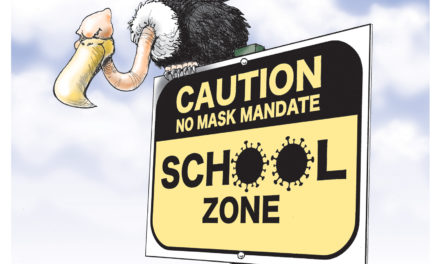From Livable Memphis:
Memphis needs vibrant places for people to live, work, shop and recreate. The Madison Avenue corridor can be exactly that – if we get the built environment right.
What truly drives economic activity? People are attracted to vibrant, lively public spaces, not big parking lots and busy roads. Many studies, including one done in the last year by MPACT, show that safe, walkable and bikable places help attract and retain the desirable young professional class. Communities designed as accessible for all users – children, the elderly, families, transit-dependent, pedestrians, cyclists, and automobiles, are proven to be the places that attract more people.
What is a “Road Diet”? A road diet transforms an underutilized roadway into a more efficient use of space for more users. On Madison, the proposed road diet will alter Madison from two automobile lanes in each direction to one car and one bike lane in each direction, along with a center turn lane. The optimal average daily traffic (ADT) for successful road diet projects is between 9,000-20,000 cars. Currently Madison’s ADT is 12,000 – well within the optimal range for a road diet.
How will a road diet affect traffic counts on Madison? Madison traffic is currently operating at 35-38% of its designed capacity. Traffic models indicate that with the proposed road diet, Madison will be operating at 45-49% of its designed capacity. This increase tends to be “insignificant” to the drivers experience because the center turn lane alleviates backed up traffic pressure. In the studies below, there is often NO DIVERTED traffic. Streets with road diets are safer, have higher visibility and are more pleasant for drivers. (And they attract that lively street life mentioned above!) Traffic counts on Madison have been in steady decline since 1993 – years before the trolley, when a number of large employers left the area. Redesigning the street to increase users, reduce collisions, and spawn economic development is a way to stabilize declining traffic counts.
Are road diets safe for cars? Road diets benefit all users – specifically automobiles. Rear end crashes, left turn multiple-threat crashes, and sideswipe crashes are the most common crash types that are reduced by such a roadway treatment. Studies show that the road diet scenario reduces vehicle collisions by more than 50%!
What about parking? The Road Diet Plan for Madison Ave preserves every single parking and loading space!
What about speeding? Road diets tend to bring traffic speeds down to their posted speed limits, which is safer for all users. An added benefit of slower traffic is economic development: People viewing the street at a slower pace (in cars, on bikes or on foot) are potential new customers for any business because they can really see and experience the street. You may not want to put your helmet on just after you got your hair done, but new potential clients will pass by your business on bike and come back later in a car. Madison becomes DESTINATION: MADISON.
Why striped bike lanes? Providing safe, clearly marked places for people to ride bikes brings new users to the streets. Bike lanes will increase Madison’s travel lanes to five: 2 for cars + 2 for bikes + 1 center turn lane. Bike lanes also further separate pedestrians from moving automobile traffic and create a more pleasant sidewalk experience. Striped bike lanes are used by cyclists who currently don’t feel welcome on the street: traditionally, these are women, children, new and intermediate riders. True, this stretch of bike lanes might not be most appealing to the fast, spandex-clad cyclists. But for Memphis’ growing cycling class in response to wildly successful facilities like the Shelby Farms Greenline and the Wolf River Greenway, bike lanes provide new access to the public streets.
Why not a shared route? In this scenario, Madison Ave would be essentially left as is with new signs to indicate that bikes might be there. Bicycles are currently allowed to use Madison and are required by law to share the right-most lane with cars. However, the current traffic speed, traffic volumes and adjacent land uses make bicycle lanes the most context sensitive option for bike traffic along Madison Avenue. Bike lanes have been proven to increase safety by removing cyclists from the same travel lanes as motor vehicles, and such safety factors encourage more people to use bicycles rather than motor vehicles. A “shared route” may be appropriate for other scenarios, but in a wide, commercial district like Madison, bike lanes are the only SAFE and APPROPRIATE option.
How will this stretch of Madison Ave connect? The Madison Ave lanes will soon connect to a new bike route on McLean and provide safe bike access to trails through Overton Park. Via McLean, Madison will also connect to lanes on Chelsea, Cooper and Southern – all in this next year! These stretches are part of a planned and growing connected network of bicycle facilities that are being designed and built to make our streets safe for bicyclists and pedestrians outlined Mayor Wharton’s 2010 Bicycle Facility Plan outlining 55 miles of routes. And there are plans for another 50+ miles to follows this initial set in the next few years as well!
What about parallel routes? Creating a single east/west bike route is unrealistic. Parallel routes are being closely analyzed as additional east/west routes to Madison – not as alternatives. All of these routes are part of a 500 miles system of bike routes planned since 2005. Different routes meet different needs. Madison Ave offers a unique opportunity to integrate new users into a commercial corridor while boosting economic development.
Where these routes properly announced? YES, the city has gone beyond the outlined protocol for announcing routine maintenance project like Madison: they were first announced publicly nearly one year ago and have been discussed in all forms of news media. Hundreds of people attended multiple public meetings.
How will this compare to other construction projects on Madison? This is routine maintenance. Madison is in dire need of repaving and has been in the repaving line-up for a while. Repaving is the most efficient time to alter the street design because stripping can be altered. The construction process for repaving and restriping the roadway is not comparable -in any way- to the construction process for the trolley. Temporary lane closures may limit turning movements, availability of on-street parking, and loading zones, but traffic will continue to flow during the construction process. Construction will be completed in a matter of months.
What are some useful resources and data that make the case for a road diet? These resources support road diets for safety, livability, operational efficiency, and transportation equity benefits, all of which are vital elements to healthy, active and vibrant community.
Crash Modification Reduction Factor Clearinghouse – Road Diets.
Road Diets: Fixing the Big Roads. Dan Burden and Peter Lagerwey’s report on the use of road diets to create more livable streets. While nearly 11 years old now, it’s still a vital resource for advocates, planners, engineers, etc.
Presentation: Road Diets Handbook: Setting Trends for Livable Streets. Jennifer Rosales’ presentation on the basics of her manual of the same name. Very useful facts and background information on why road diets are key building blocks of livable communities.
APBP Road Diets Webinar. Peter Lagerwey’s great presentation from just a few months ago on the benefits of road diets, along with a few useful case studies.
This information was prepared by Livable Memphis and engaged citizens wanting safe, healthy vibrant place to live, shop, work and recreate. For more information, please contact Sarah Newstok at 901-725-8370 or sarah@livablememphis.org, or Anthony Siracusa at 901-843-3401.





